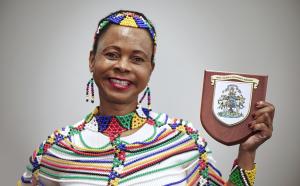
The Covenant of Water
The Covenant of Water, by Abraham Verghese
Grove Press, June 2023. 724pp
‘Most families are bound not just by blood but by secrets,’ writes Abraham Verghese, in the letter with which he opens his new novel, The Covenant of Water. It’s his first since the multi-international bestseller Cutting For Stone in 2009, and he apologises to readers, booksellers and librarians for the delay – ‘not just because [the novel] is ambitious in its scope and inherent intricacies, but also because I have a fulfilling day job as a doctor and teacher of medicine.’ Verghese is a Professor and Vice Chair of Medicine at Stanford (as well as a Fellow of this College) and readers who loved Cutting for Stone for its epic family drama and medical detail will not be disappointed. When I began reading this book I kept a running list of medical conditions and procedures encountered in the text, but gave up after a while – though not before noting Cushing’s response, needle ventriculostomy, pseudocyesis, tracheostomy, carotid aneurysm, opiate intoxication, diphtheria, tendon transfer surgery, as well as many details of leprosy. The book brought back aspects of practice I haven’t thought about since medical school, eg. that the TMJ is our only ginglymoarthrodial joint, in that it both hinges and slides; the counterintuitive manoeuvres to deliver a breech birth.
Verghese tells his readers from the outset that the book is about love, faith, family and medicine (‘after all, what is medicine but life++?’, he writes). It follows one family and the dramatic events of their lives against the history of India from 1900 to the 1970s, in the village of Parambil, Kerala, and Madras, Tamil Nadu. Verghese often holidayed in Kerala as a boy, and memories of happy summers with his grandparents in a ‘fantasy land of lagoons, lakes, streams and rivers’ drive the intensely atmospheric and convincing rendering of a place that is as much water as land. Water is to be understood as the element that gives life but can also take it. With baptism, it’s also the element that most signifies rebirth.
The secret of this family is revealed early: that one member of every generation dies by drowning. The victims of this malady live in a place of water but are obliged to avoid it – yet the terrible curse continues to exact its toll. ‘Every family has secrets,’ says the man who arranges marriages for the community, ‘but not all secrets are meant to deceive.’ He doubles as a genealogist, and is able to help tease out the pattern of inheritance of these deaths, ultimately opening them to the light of scientific investigation (and potentially a cure). Rather than ‘bound by secrets’, Verghese suggests that families can be bound by what they share.
The Covenant of Water holds within it a panoramic vision of family life among a cast of heroes and heroines, who are displayed with all their jealousies and loves, ambitions and hatreds, boredoms and pettinesses, but also their pull towards beauty and their seeking after meaning and transcendence. There’s Big Ammachi, the matriarch, married off to a kindly widower almost thirty years her senior at the age of twelve. Baby Mol, a beloved daughter with cretinism. Rune Orqvist, a peripatetic Swedish surgeon who, after successfully treating the postmenopausal dyspareunia of an English lady, earns both renown, and secure funding for his clinic. Philipose the literary scholar and journalist, who learns to speak English by reading Moby Dick (‘it swayed me to my purpose,’ he says hilariously of a flood, ‘and hither thither we boatingly floated’). Lenin, the Communist Naxalite and Elsie, a gifted artist with a dark secret of her own. Elsie’s daughter Mariamma is a young woman whose journey through medical school (and ultimately neurosurgical training) is both inspirational and beautifully told. One of the heroes is Digby Kilgour, a Glaswegian surgeon and Catholic obliged to join the Indian Medical Service because of the career-wrecking sectarianism of his home city. With Kilgour, Verghese makes many serious points about Scotland of the 1930s, but has fun with him too – his mentor is a wise and kindly ‘Professor Alan Elder’ from Edinburgh, and Verghese’s research trips to the west of Scotland have given him lines such as ‘Aye, it’s a stoater of a scrotum.’
These flashes of humour add light and depth to a gorgeous, richly textured, epic but dark canvas of stories. Verghese reminds us that life is a great gift, not to be squandered, and that although medical practice might take us into its shadow-side, it also grants tools of redemption with which we help our patients climb back into the light. Medicine, like life, is unglamorous, but can be deeply rewarding nevertheless – engaging our curiosity as well as our compassion, our humanity as well as our intellect. Towards the end of the novel Mariamma becomes an intern, working unsupported in a hospital built to serve the community she grew up in. ‘By watching the probationers, she’s learned how to change soiled sheets under a bedridden patient,’ Verghese writes, ‘how to turn him, and give him a proper bed bath. It’s humbling. Shouldn’t every physician learn this? Isn’t this what medicine is really about?’ I’m glad this book came into my life. Read it, and you will be glad of it too.
Gavin Francis is a GP in Edinburgh.
His book about the NHS Free For All – Why the NHS is Worth Saving is out this summer.




